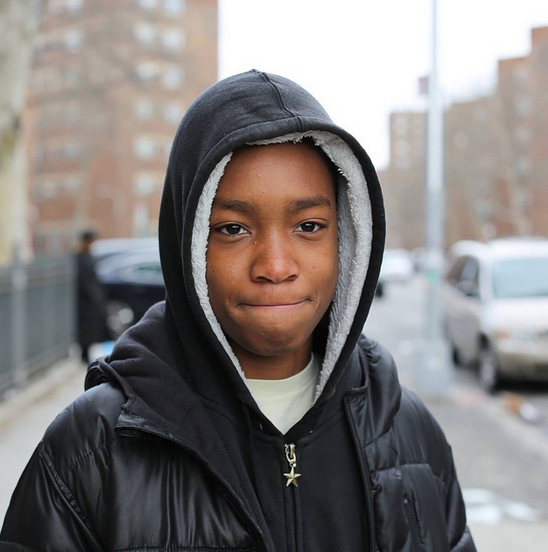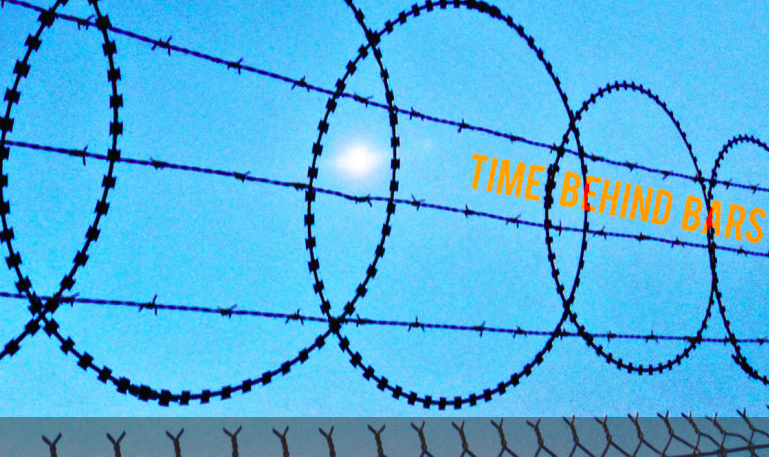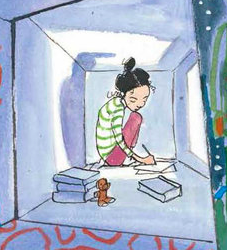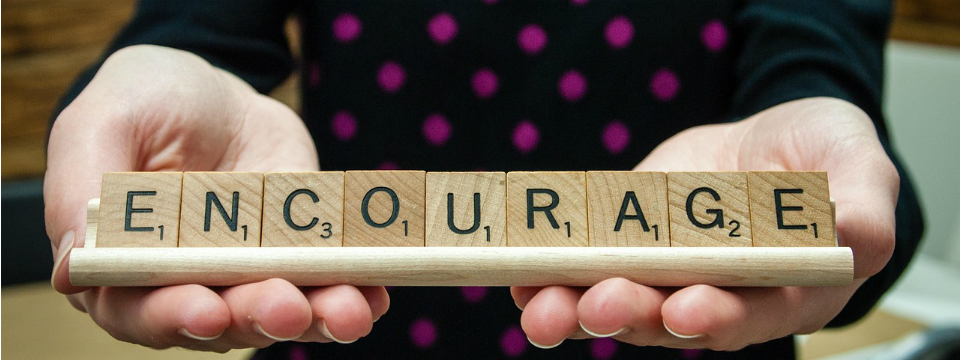“Trauma-Sensitive” Schools: A new framework for reaching troubled students
 By LAURA PAPPANO (Harvard Education Letter)
By LAURA PAPPANO (Harvard Education Letter)
The most artfully devised curriculum means little to a student whose mind is fixed on last night’s shooting outside or the scary, violent fight between parents that broke out in the kitchen. Brilliant teaching often can’t compete with the sudden loss of a parent or friend. Yet incidents like these reverberate in schools and pose deep challenges to educators.
More than 15 years of research reveals that the prevalence and effect of “adverse childhood experiences” (ACEs) are pervasive in the United States—more than 68 percent of children have experienced a possible traumatic event by age 16—and pernicious, with higher ACE scores correlating to health, education, and social problems. Federal data show that 686,000 children were victims of abuse or neglect in 2012, the most recent year for which figures are available. The National Survey of Children’s Exposure to Violence found one in four children had witnessed violence, and one in 10 had seen one family member assault another.
Children who experience trauma struggle with interpersonal relationships, face cognitive deficits (including memory and language development), and overreact to everyday stress. In school, because traumatized students view the world as dangerous and misread social cues, minor events may trigger defiant, disruptive, or aggressive behavior. Alternately, they may withdraw and seem not to care. “Their ability to cope is overwhelmed,” says Eric Rossen, director of Professional Development and Standards for the National Association of School Psychologists, explaining that such behavior is often a magnet for disciplinary action.
Now, a growing interest in creating “trauma-sensitive,” “trauma-aware,” or “trauma-informed” schools has educators checking raised voices, putting away detention slips, and looking not at bad behavior but at what triggered it. In trauma-sensitive schools, says Rossen, staff adjust their interactions with traumatized students—from letting them exit class midlesson if they feel overwhelmed to changing “automatic thoughts” when confronting a student acting out—so that they can focus on learning.
Moving Beyond “Bad Behavior”
“The Flexible Framework” offered in Helping Traumatized Children Learn, a handbook published by Massachusetts Advocates for Children with Harvard Law School and the Task Force on Children Affected by Domestic Violence, is one of many resources available to educators. It urges weaving trauma-sensitive thinking into school culture, training staff, tapping mental health experts, teaching in ways that make students feel safe, building nonacademic relationships, and having rules that reflect the role of trauma in misbehavior (see sidebar, “Strategies for Teaching Traumatized Students.”
In practice, says Rossen, this “changes the questions we ask [students] from ‘What’s wrong with you?’ to ‘What’s happening? What’s going on?’” It resets the approach to misbehavior from “‘This person is being willfully disobedient’ to ‘They are reacting adaptively to a situation they have no control over.’”
“You might say in class, ‘Don’t forget we have a spelling test on Friday,’” says Joel Ristuccia, a child psychologist and member of the Trauma and Learning Policy Initiative at Harvard Law School in Cambridge, Mass., who leads a certificate program at nearby Lesley University to help educators create trauma-sensitive schools. A traumatized student, he says, “might respond as if a saber-toothed tiger just walked in the room.”
While children react differently to traumatic events—“Different kids will respond to that shooting outside in different ways,” says Ristuccia—how that child is supported can have a big impact. “A student might feel alone coming into school, and the school might exacerbate that sense of isolation: ‘Am I safe when I walk in here?’” he says. “Another child may have support. She might go see Miss McGillicutty and know that ‘she might settle me down.’”
Effects of Trauma
Alicia Lieberman, director of the Child Trauma Research Program at the University of California, San Francisco, says traumatic events “change the physiology and the architecture of the brain.” Brain pathways that develop in the first year of life to distinguish between safety and danger, she says, are calibrated differently in children exposed to family and community violence.
Children unable to count on adults to keep them safe instead rely on fledgling coping mechanisms, including fight, flight, or freeze responses. Students may function even with high levels of toxic stress, but a minor event can trigger an outburst because a student suddenly feels overwhelmed by an immediate threat (even if one doesn’t exist) and lacks the ability to cope.
That’s what happened in New Haven, Conn., when Kim Jewers-Dailley, director of School-Based Projects at the Post Traumatic Stress Center, was working at the Metropolitan Business Academy, a public high school. One day a girl began yelling, swearing, and threatening another girl. The issue? “She was absolutely enraged that after a number of classes another student was sitting in ‘her’ seat,” says Jewers-Dailley, explaining that the class had no assigned seats.
When the teacher demanded that the girl “find another place,” says Jewers-Dailley, “it escalated her further.” A security guard was ready to remove the girl, but Jewers-Dailley took her aside and learned that the girl’s mother was a drug addict, that her father was absent, and that the girl had been evicted, moved, or been in and out of shelters “upwards of 30 times—and she was 16.”
Heading Off Outbursts
The taking of the seat—and the worry that she had no place—triggered a familiar fear. “A traumatized person is thinking survival,” says Jewers-Dailley. After telling the girl she understood her reaction but that there would always be a seat for her in the class, Jewers-Dailley says, the girl “apologized to the teacher and went back to class and sat in a different seat.
In New Haven, Jewers-Dailley and her colleagues work at several schools with the aim of heading off outbursts before they happen. One strategy they use at two high schools is to post “Miss Kendra’s List,” a list of things no child should ever have to endure, including being told they are stupid or worthless, having nowhere to sleep, or being prostituted or beaten. Developed by the Post Traumatic Stress Center for use in the New Haven Public Schools (a list for elementary schools is also available), the list is posted right at the high school entrance with trained psychologists standing by to help if a student indicates a need to talk, even with just a subtle nod at the list. They also distribute the list on cards with a number to call or text. Just a few minutes of talk and support, says Jewers-Dailley, can allow a student to calm down and participate in school.
In Brockton, Mass., the need for trauma-sensitive schools hit Salvatore Terrasi, director of Pupil Personnel Services, in fall 2007 at a citywide conference. A district attorney’s representative showed a map pinpointing incidents of crime and then overlaid a map of public schools. “People saw a correlation between what goes on in the neighborhood and what the children bring to school the next day,” he said. It was the beginning of the district’s work with Ristuccia—and a fresh mindset. “Strict application of consequences and punishment, while that is in the student handbook, doesn’t work all that effectively to resolve the issues we’re trying to resolve,” explains Terrasi.
So far 250 staff in the district have taken at least one graduate course on trauma, and five of the district’s 26 schools have wholly embraced a more flexible, child-centered approach.
For example, if a student is sent to the principal, rather than simply ordering a child down to the office (where they may wander the halls feeling angry), a counselor will walk to the office with the child and along the way discuss what’s going on. Districtwide, all schools also now gather data on student behavior, including which days of the week and times of the month—even times of day—account for spikes in disciplinary action. Elizabeth Barry, the district’s executive director of learning and teaching for preK–5, checks with principals to ensure that behavior data “has a place along with the academic data” in faculty meetings.
In an unusual level of cooperation, each school day by 7:45 a.m. the Brockton Police Department faxes John Snelgrove, director of guidance for K–8, a list of where they responded to calls overnight. Snelgrove cross-checks addresses against the school database to find affected students. “I’ll inform the school counselor, ‘Let’s talk to the teacher; let’s go a little easier on Johnny Jones, if Johnny doesn’t bring in his homework or he needs to take a rest,’” says Snelgrove. On Monday mornings, the report runs six to eight pages.
Flexibility and Breaks
In an era of high-pressure performance, offering such leeway feels counterintuitive. But Ristuccia says giving students flexibility can allow them to stay engaged, recalling a teacher who allowed a student prone to outbursts to exit the room whenever he felt the need. The teacher “worried he would abuse it during exams and tests,” but the frequency of breaks diminished, he says. The student said just knowing he could leave made him feel more in control, and therefore he didn’t need to leave.
Such flexibility allowed a student in Mindi Englart’s creative writing class at Cooperative Arts and Humanities High School in New Haven, Conn., to find academic success. At first the student came to class every day and fell asleep. Guest speakers visited, and he snoozed. Field trips, same thing. Englart, who knew he had slept through classes for two years, decided to try something different. The behavior bothered her, but she told him, “I’m going to let you sleep. I’m not going to be your mom.” While he continued to sleep in class, he also started to write. He turned in a creative writing piece that, Englart says, was so good she Googled to make sure he hadn’t plagiarized. “I said, ‘I can’t imagine that you sleep and this is what you are capable of,’” she recalls. “He was smiling. He usually has a very flat affect.”
This, along with recognition he received for a piece in the literary magazine, seemed to motivate him. He still slept, but he wrote more. When he didn’t turn in anything for several weeks, he told Englart that he was working on something important. “After a few weeks,” she recalls, “he handed in a piece about the death of his best friend, who was like a brother, who was shot and killed.” It was a stunning piece of work, says Englart. He’s now completing a 50-page book of memoir-style essays.
Changing the School Culture
While it helps that Brockton has two full-time counselors at every school, it’s clear that teachers are powerful players in helping children with trauma find success. Many classrooms have “cool-off areas” with headphones and classical music, playdough, and sensory toys. In one school, a boy who gets anxious because his father is in jail has permission to call home anytime and check to make sure his mother is there.
In Room 325 at Arnone Elementary School—a school of 775 students a block from the district court—fifth-grade teacher Danielle Winn, like many of her colleagues, lets children know that if they need a break they can grab a laminated pass with a tiger on it (the school mascot) from the lime-green caddy and amble down to the guidance office.
“You just take it and go,” says Winn, noting that among the 19 students in her class, some have lost parents or have parents in jail, and others are left to fend almost entirely for themselves. If she sees that a child is edgy but won’t reach for the pass, she’ll offer a break. “I might give them an errand to run, send them to get the mail,” she says. It helps the child cope, “and it’s not interrupting the learning of the rest of the kids.”
Academically, Arnone Elementary still struggles, but Principal Colleen Proudler says paying attention to the traumatic events her students live through has changed the school culture, cutting suspension rates in half over the past five years. Data also show that referrals to the principal’s office are dropping. Between September and the end of January 2011–2012, teachers made 458 referrals; in 2012–2013, they made 427 over that same period; and in 2013–2014, the number was down to 406—nearly a 12 percent drop.
At midmorning, sun glances through high windows as students in Winn’s class read aloud from Bridge to Terabithia, politely taking turns. Not long ago, says Proudler, Arnone was a tense place. “You’d see kids out in the hall, kids yelling at teachers, parents coming in fired up and yelling at my staff—lots of yelling,” she recalls. Children, triggered by seemingly minor events, unleashed hurricanes of anger. They hit, knocked over chairs and desks, and ripped up bulletin boards. “If you had walked into my building four or five years ago,” Proudler says, “and you walked in today, you would not believe it is the same place.” And, she points out, “It’s the same kids, the same teachers.”
Laura Pappano is a freelance journalist and regular contributor to the Harvard Education Letter.









